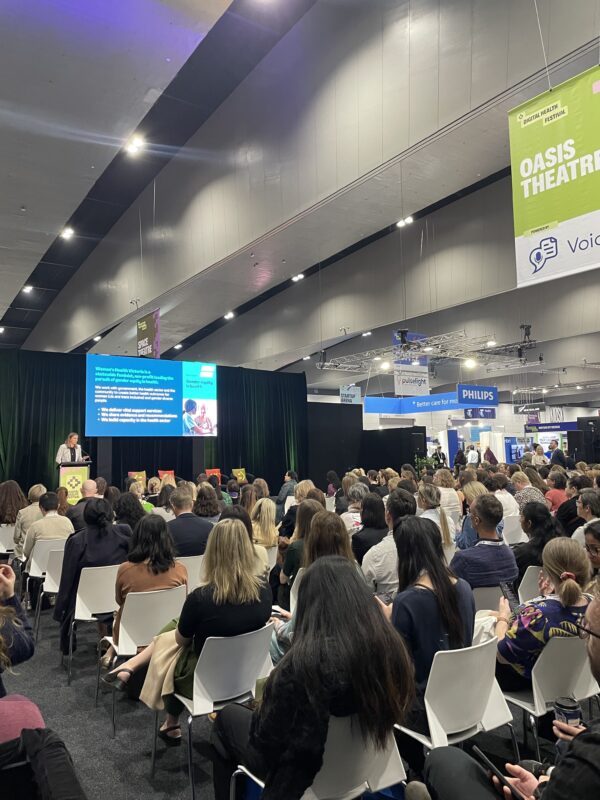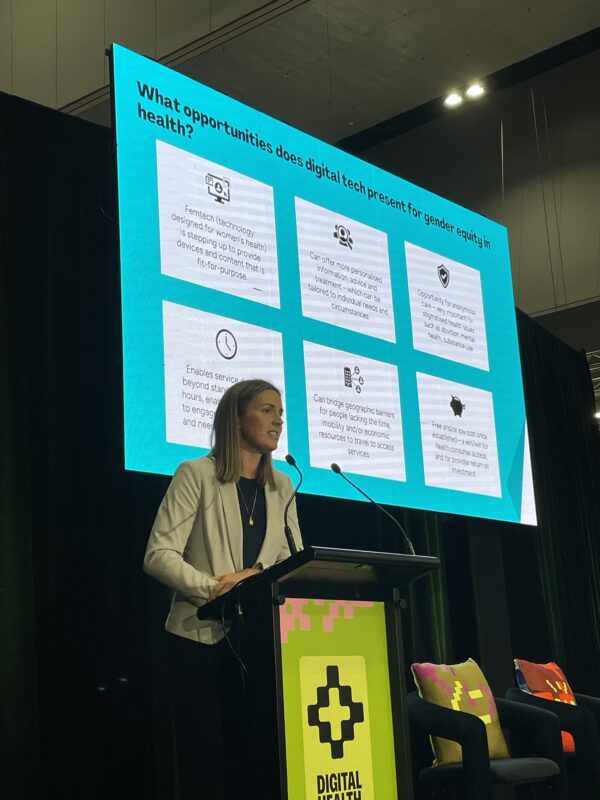This week, Melbourne hosted the Digital Health Festival 2025 bringing together over 8,000 leaders and innovators in healthcare.
Presenting at DHF25, Women’s Health Victoria delivered a clear message: digital health must centre equity. If we don’t challenge bias and inequity in our health system, we risk embedding it into the technology that shapes our future.
As digital health continues to grow at pace, digital technologies can be powerful tools to bridge longstanding gaps in access, privacy, and personalised care. For women and gender-diverse people, especially those navigating stigma, limited mobility or time constraints, digital platforms can be life-changing. Anonymous access to mental health support, abortion information, or menopause guidance can mean the difference between care and suffering in silence. Delivered at the time when people need it.
But, we must be clear-eyed about the risks and encourage founders to consider gender equity from the start. When women’s voices and lived experiences are excluded from the design of health technologies, it results in products that fail to meet our needs – or worse, put us at risk. We see this in algorithms that misdiagnose, in apps based on outdated and unrepresentative medical research, and in digital divides that reflect and perpetuate broader social inequities. Digital health solutions must reflect the diversity and inequity in our community, ensuring they are accessible to people with low health literacy, those living in regional areas, and individuals facing multiple forms of discrimination and disadvantage.
We must also recognise the specific needs of older women, who are too often excluded from discussion, research, and policy. Many older women face barriers not just in access, but in digital literacy – the knowledge, experience, and confidence to navigate new technologies.
We must be cautious that digital health does not reinforce the very barriers it claims to dismantle.
To the digital health industry, these are our calls to action.
- Embed gender equity from the start.
- Ensure women are represented in digital health leadership.
- Audit the data and design processes for bias and stereotypes.
- Partner with people with lived experience and gender equality experts.
Let’s build digital health tools that meet people where they are and reflect the full diversity of human experience.
 WHV CEO, Sally Hasler presenting at the Digital Health Festival 2025
WHV CEO, Sally Hasler presenting at the Digital Health Festival 2025

- Sally Hasler
Chief Executive Officer




